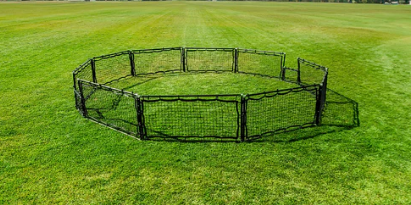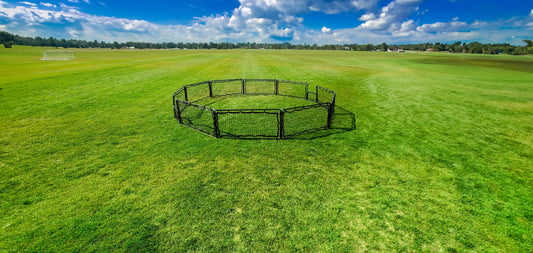Physical Education is an essential component of children's development, significantly impacting kids from elementary school to high school. Fun P.E. Games in these classes are not just about physical activity; they encompass cognitive, social, and emotional growth aspects.
In terms of physical health and fitness, engaging in a PE activity helps improve cardiovascular endurance, muscular strength, flexibility, and coordination. These activities, especially in middle school and high school, are vital in developing motor skills, enhancing physical capabilities, and maintaining a healthy weight.

Cognitive Development is another critical aspect. Regular physical exercise, integral to physical education class, have been proven to enhance concentration, memory, problem-solving abilities, and overall academic performance.
Social and Emotional Skills are fostered through cooperative games and group exercises. In elementary school, these fun games are crucial in teaching children how to work together, respect others, and handle both victory and defeat gracefully.
Healthy Lifestyle Habits are instilled from a young age. P.E. classes play a pivotal role in shaping children's attitudes and behaviors towards health and fitness.
Overall Well-being is greatly enhanced through P.E. classes. They contribute to children's enjoyment, fun, and stress relief, crucial for their mental well-being.
In conclusion, P.E. classes offer a structured environment that fosters physical health, cognitive development, social skills, emotional well-being, and healthy lifestyle habits, paving the way for a healthier and happier future for our kids.
Here is a list of 5 of the most fun P.E. games to help with your PE planning.
Tic Tac Toe Relay: Tic Tac Toe Relay is a variation of the classic game Tic Tac Toe that adds an active and competitive twist of a relay race. It is a team-based activity that promotes strategic thinking, coordination, and quick decision-making skills. The game combines elements of relay races and the familiar grid layout of Tic Tac Toe developing a new great game.
- Group Formation: Participants are divided into two teams, Team X and Team O, with an equal number of players on each team. The teams line up side by side, facing a large grid marked on the ground or displayed on a wall.
- Game Setup: The Tic Tac Toe grid consists of nine squares, arranged in a 3x3 formation. Each square is labeled with a number or a letter to represent the position of the move.
- Objective: The objective of Tic Tac Toe Relay is for each team to complete a line of three X's or three O's (horizontally, vertically, or diagonally) within the grid. The first team to achieve this wins the round.
- Relay Format: The game is played in a relay format, with each team taking turns to make a move. The first player from each team starts at the front of the line.
- Making a Move: When it's a player's turn, they must run to the Tic Tac Toe grid and choose an available square to place their team's symbol (X or O). Once they make their move, they return to the back of their team's line, and the next player takes their turn.
- Strategic Moves: As the game progresses, players strategize to block the opposite team's attempts to complete a line while trying to create their own winning line. The relay format adds an element of urgency and pressure, as players need to think quickly and make decisions that benefit their team.
- Winning the Round: The round ends when one team successfully completes a line of three symbols (X's or O's) within the grid. The team that achieves this calls out "Tic Tac Toe!" to signal their victory for that round.
- Multiple Rounds: The game can be played in multiple rounds, allowing teams to switch between being Team X and Team O. The team that wins the majority of the rounds is declared the overall winner.
Tic Tac Toe Relay adds an active and competitive element to the traditional game, making it an engaging and dynamic team activity. It encourages strategic thinking, teamwork, communication, and quick decision-making skills. By combining physical movement with the mental challenge of Tic Tac Toe, the game creates a fun and interactive experience for participants of all ages.

9 Square: 9 Square is an interactive and fast-paced game that combines elements of volleyball, tennis, and handball. It is played in a square-shaped structure with nine smaller squares arranged in a 3x3 grid.
Here's a more in-depth explanation of 9 Square:
- Game Setup: The 9 Square game requires a specialized framework or structure that consists of nine individual squares suspended from a sturdy frame using bungee cords or ropes. Each square is approximately 3 feet by 3 feet (0.91 meters by 0.91 meters) and has a designated number from 1 to 9.
- Objective: The objective of 9 Square is to be the last player standing in Square 1 (the highest-numbered square) by eliminating opponents from the game. Players aim to hit the ball into other squares without committing a fault or allowing the ball to hit the ground within their square.
- Gameplay: The game begins with each player standing within one of the nine squares. A soft ball, often a foam or rubber ball, is introduced into Square 9 by a designated server. Players hit the ball using any part of their body, except for catching or holding it, to send it into an opponent's square.
- Movement and Rotation: Players are allowed to move within their own square and may jump or reach outside of their square to hit the ball. However, they must return to their square before the ball is hit by another player. The ball must pass through each square sequentially, from 9 to 1, and a player is eliminated if the ball lands in their square or if they commit a fault (e.g., double hits, hitting out of sequence).
- Faults and Elimination: A fault occurs when a player commits a rule violation. Common faults include hitting the ball out of bounds, hitting the ball before it enters their square, touching the ball with two hands simultaneously, or violating other specific game rules established by the players. When a fault occurs, the player who committed the fault is eliminated from the game, and the remaining players move up to fill the vacant higher-numbered squares.
- Winning: The game continues with players trying to eliminate opponents and move up to the higher-numbered squares. The objective is to reach and remain in Square 9 (center square). The last player standing in Square 9 wins the game. Depending on the group size and available time, multiple rounds or a tournament-style format can be played to determine the overall winner.
9 Square is popular in various settings, including schools, youth groups, community events, and recreational areas, due to its fast-paced nature and inclusivity. It promotes hand-eye coordination, agility, strategic thinking, and friendly competition. The game encourages active participation, teamwork, and communication skills as players react quickly to the ball and coordinate their movements to outlast opponents and secure a place in the higher-numbered squares.

Capture the Flag: Capture the Flag is a popular outdoor team game that involves strategy, teamwork, and a race to retrieve the opposing team's flag while protecting your own. The objective of the game is to successfully capture the opponent's flag and bring it back to your team's territory without getting tagged or captured by the opposing team.
Here's a more detailed explanation of the game Capture the Flag:
- Group Formation: Participants are divided into two teams, usually of equal size, and each team is assigned a home base or territory. The play area is typically divided into two halves, with a clearly marked boundary or neutral zone in the middle.
- Flag Placement: Each team's flag is placed in their respective home base, typically a visible and defendable location. The flag should be easily distinguishable from other objects in the area.
- Objective: The objective of Capture the Flag is for teams to infiltrate the opponent's territory, capture their flag, and safely bring it back to their own territory. The first team to successfully capture the opposing team's flag and bring it back to their territory without being tagged or caught wins the game.
- Gameplay: The game starts with each team strategizing and formulating a plan. Players can choose to either defend their own flag or go on the offensive to capture the opponent's flag. The neutral zone or boundary area is typically where encounters and tagging occur between players from opposing teams.
- Tagging and Capturing: When players from opposing teams encounter each other, they can attempt to tag and temporarily immobilize their opponents. Once tagged, players are typically required to freeze or return to their own territory before they can resume play. The captured player can be released if a teammate successfully tags them.
- Flag Retrieval and Capture: To capture the flag, a player must enter the opponent's territory, find and grab the flag, and then safely return to their own territory without being tagged. If a player is tagged while carrying the flag, they must drop it at the location where they were tagged, and it can be retrieved by the defending team.
- Rescuing Teammates: If a player from their own team is tagged and captured while in the opponent's territory, teammates can attempt to rescue them by tagging them back or touching them while they are in the neutral zone. Once rescued, the player can resume playing.
- Winning the Game: The game continues until one team successfully captures the opponent's flag and brings it back to their territory without being tagged or captured. The team that achieves this objective is declared the winner.
Capture the Flag is a dynamic and exciting game that promotes teamwork, strategy, communication, and physical activity. It encourages players to think tactically, work together, and exhibit both offensive and defensive skills. The game can be adapted to various playing environments and can be enjoyed by participants of different ages and fitness levels.
Dodgeball: Dodgeball is a fast-paced and energetic game that involves two teams competing to eliminate players from the opposing team by hitting them with thrown balls. The objective of the game is to be the last team with remaining players on the court.
Here's a more detailed explanation of the game Dodgeball:
- Group Formation: Players are divided into two teams, typically with an equal number of participants. The teams are positioned on opposite sides of a defined play area, which is usually a rectangular court with a center dividing line.
- Gameplay: The game begins with both teams standing behind their respective back boundary lines. Several dodgeballs, which are soft balls (to insure safety), are placed along the center line.
- Starting the Game: The game starts with a signal, often a whistle or a referee's call. Players rush forward from their starting lines to retrieve the balls and take them back to their side of the court.
- Throwing and Dodging: Once players have the balls on their side, they can throw them at opponents on the other team. The objective is to hit an opposing player below the neck with a thrown ball, causing them to be "out" and leave the court.
- Getting Out: When a player is hit by a ball and it makes direct contact with them or their clothing, they are considered "out" and must leave the court. They are typically required to sit or stand along the sidelines or behind a designated area.
- Catching and Defending: If a player catches a thrown ball before it touches the ground, the thrower is considered "out," and a player from the catching team who was previously out may re-enter the game. Players can also use the balls to deflect or block incoming throws to avoid being hit.
- Resurrection or Reentry: Some versions of dodgeball allow players who are out to be brought back into the game when a teammate catches an opponent's throw. The player/child who was previously out can reenter the game, and the thrower is eliminated.
- Game Continuation: The game continues until one team eliminates all the players from the opposing team or until a designated time limit is reached. If the time limit is reached, the team with the most remaining players wins.
Dodgeball is a game that requires agility, coordination, throwing accuracy, and quick reflexes. It promotes teamwork, communication, and strategic thinking as players work together to eliminate opponents and protect their own team members. It is a thrilling and engaging game that can be enjoyed by people of all ages and skill levels, making it a popular choice for physical education classes, recreational activities, and organized tournaments.
Another great game with elements of dodgeball is Gaga Ball.

Volleyball: Volleyball is a popular team sport played on a rectangular court, typically indoors or on a sandy beach. It involves two teams, each consisting of six players, aiming to score points by hitting a ball over a net and into the opponent's court while preventing the opposing team from doing the same. The objective is to win sets by reaching a specific point target before the other team.
Here's a more detailed explanation of the game of volleyball:
- Court and Equipment: The volleyball court is rectangular in shape, measuring 18 meters long and 9 meters wide for indoor games. There is a net stretched across the center, dividing the court into two equal halves. Each team occupies one side of the court. The ball used in volleyball is typically made of leather or synthetic material, with a circumference of around 65-67 cm.
- Team Formation: Each team consists of six players, with specialized positions such as setters, hitters, and defensive players. The teams rotate positions clockwise after winning a rally and gaining the right to serve. (The size of small group per-side can be adjusted to meet the skill level of the players)
- Gameplay: The game starts with a serve from behind the end line. The serving team must hit the ball over the net and into the opponent's court, aiming to prevent the opposing team from successfully returning the ball. The receiving team's objective is to pass the ball to their setter, who sets it up for an attacker to spike it into the opponent's court.
- Rally and Scoring: The rally begins when the ball is served, and players continue to hit the ball back and forth until it touches the ground, goes out of bounds, or a team commits a fault. A point is awarded to the team that wins a rally, regardless of which team served. Points are scored when the ball hits the ground within the opponent's court or if the opposing team makes a fault (e.g., hits the ball out of bounds, fails to return the ball properly, or commits a violation).
- Three-Hit Rule: In volleyball, a team is allowed a maximum of three hits to return the ball. Typically, the first hit is a pass or bump, the second is a set, and the third is a spike or attack. The ball must not be caught, lifted, or carried during a hit, and players cannot hit the ball twice in succession, except in certain blocking situations.
- Blocking and Defense: Players at the net have the opportunity to block an opponent's attack by jumping and attempting to stop the ball from crossing the net. Defensive players strive to dig or receive the opponent's attacks, aiming to keep the ball in play and set up their team for an effective counter-attack.
- Set and Match: Volleyball matches are typically played as best-of-five sets. To win a set, a team must reach 25 points first, with a minimum two-point advantage. If the game reaches a fifth set, it is often played to 15 points. The team that wins three sets first wins the match.
Volleyball is a dynamic and fast-paced sport that requires teamwork, communication, agility, and coordination. It promotes physical fitness, hand-eye coordination, and strategic thinking. With its combination of exciting rallies, powerful spikes, precise passes, and strategic positioning, volleyball has become a globally loved sport, played recreationally, in schools, and at professional levels. Each of these sports can be adjusted to meet the level of the players by increasing the intensity or lowering the skill level qualifications.

Incorporating fun physical education games into the curriculum is a fantastic way to engage and motivate students while promoting their physical, social, and cognitive development. These games provide an opportunity for children to be active, work together as a team, develop their motor skills, and enhance their problem-solving abilities.
By infusing elements of competition, cooperation, and creativity, these games make physical education enjoyable and exciting for students of all ages. They encourage a positive attitude towards physical activity, helping to foster a lifelong love for exercise and fitness.
Moreover, these games go beyond the physical benefits and contribute to the overall well-being of children. They promote social interaction, teamwork, and communication skills, allowing students to develop important interpersonal abilities that are essential in various aspects of life.
Additionally, fun P.E. games create an inclusive environment where every student can participate and succeed, regardless of their skill level or athletic ability. They celebrate diversity and encourage a supportive atmosphere, fostering a sense of belonging and boosting self-confidence among students.
In conclusion, by incorporating fun P.E. games, we can transform any PE class or any PE lesson into engaging, dynamic, and memorable experiences for kids of all ages. These games not only promote physical fitness but also provide opportunities for personal growth, skill development, and social interaction. Let's continue to embrace these games as a valuable tool in shaping healthy, active, and well-rounded individuals.







